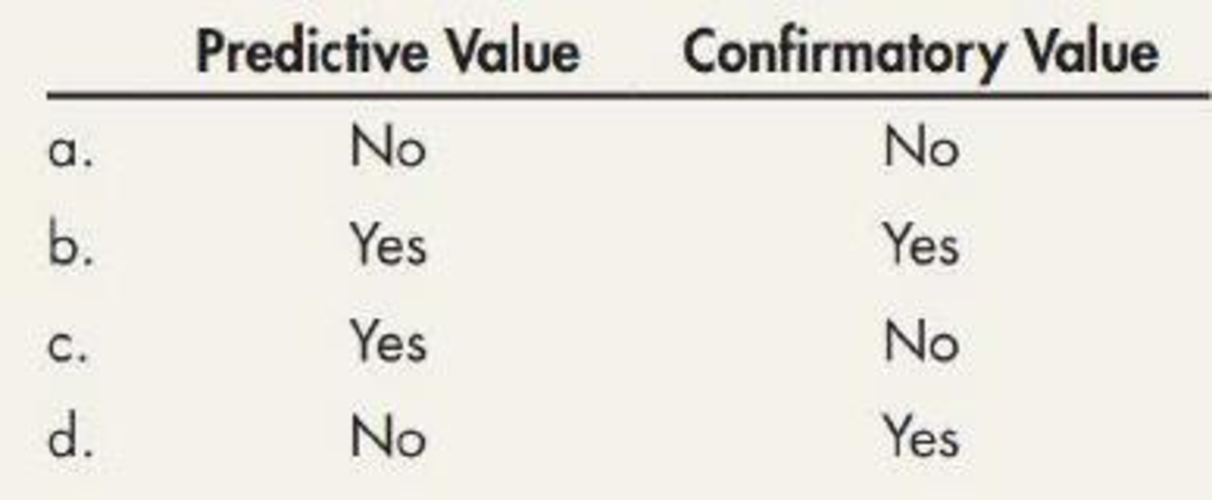Inventory Turnover: Definition & How to Calculate It

You’ll take the beginning inventory, add purchases made over the course of the month, and then subtract ending inventory to find COGS. Trimming unnecessary delays and strengthening your supply chain can help safeguard you from the headaches that come with delayed product deliveries. Grocery stores and other businesses that sell perishable goods often have a higher inventory turnover ratio because their products expire. If you’re selling across different regions, having a single pricing strategy for all markets may not deliver the best results. Instead, consider multiple pricing strategies based on factors such as seasonal events, shipping costs, and purchase quantities. Inventory turnover represents how many times your average inventory has been sold or “turned over” within a specified time period.
An automated system can track what items sell the best and ensure those items get replenished when inventory is low. Automation keeps a pulse on inventory levels and takes the stress out of reordering, so you can focus on running your business more efficiently. Opting for automation in favor of manual reordering is a great way to ensure you always stay on track and your inventory levels never get too low. Especially if you find yourself reordering too often and getting left with obsolete inventory, an automated inventory management system will notify you when your stock is getting low — and even reorder for you.
What is the best inventory turnover ratio?
You’ll understand which units are underperforming, and so be able to come up with strategies to solve that—for example, by reviewing their price, discounting them and so on. And lastly, you’ll be able to anticipate order-demand with greater accuracy, Inventory Turnover Ratios for Ecommerce enabling you to attend to manufacturing and production decisions ahead of time. To do that, you’ll need to calculate your inventory turnover ratio. That said, companies within the same industry can also vary in their turnover rates.
Macy’s, Inc. Reports Fourth Quarter and Full-Year 2022 Results – Macy’s, Inc.
Macy’s, Inc. Reports Fourth Quarter and Full-Year 2022 Results.
Posted: Thu, 02 Mar 2023 08:00:00 GMT [source]
Even though buildings and equipment have a higher dollar value, inventory is your most important asset. One way to measure the performance of your retail business is inventory turnover. Inventory turnover is a financial metric that measures your efficiency in managing and selling stock. High turnover signifies rapid sales, while low turnover may indicate weak performance or overstocking.
This can be especially prudent when stocking a new product for which you don’t have prior sales data. Pre-orders can be a beneficial tool for businesses looking to gauge demand, generate excitement, and raise funds. Pre-orders can also help inventory move through the supply chain at a steadier pace, which can improve inventory turnover. Conversely, by calculating inventory turnover ratios for your products, you’ll know exactly which products to discontinue, as well as when and how many units to reorder for low-turnover SKUs. However, doing so may lead you to invest in products that are very slow to sell — or worse yet, that won’t sell at all anymore. This results in obsolete inventory or dead stock that increases holding costs, and costs time and money to move out.
Employ omnichannel marketing
Previously, we mentioned that high inventory turnover typically speaks of good sales and healthy business. However, there are cases when high turnover can harm your business. Let’s look in more detail at what a good inventory turnover ratio is, what can affect it, positively or negatively, and how to solve the most frequent inventory turnover challenges. Average inventory smooths out the amount of inventory on hand over two or more specified time periods. Knowing your turnover ratio depends on effective inventory control, also known as stock control, where the company has good insight into what it has on hand. The best way to avoid damage during last mile delivery is to use your own in-house delivery team that’s fully trained on how to handle your items.
Boutique bakery industry gaining ground across tier-1 cities in India – Indian Retailer
Boutique bakery industry gaining ground across tier-1 cities in India.
Posted: Fri, 18 Aug 2023 07:13:49 GMT [source]
The JIT method isn’t just effective for retailers with time- and temperature-sensitive products, though. Apparel companies and other e-commerce brands can benefit from this, too. Some retailers are taking this a step further by doing away with inventory altogether. E-commerce platforms such as Society6 leverage print-on-demand models to offer independent artists a means of selling a vast array of products without needing any storage space at all. Customer experience is the key brand differentiator in today’s market (over both price and product). And research has shown that brands with a superior customer experience sustain revenue 5.7 times higher than that of their competitors with sub-par customer experience ratings.
What is a bad inventory turnover ratio?
But, it’s still worth mentioning because it is the foundation of any successful business. And while “make more sales” is a simple concept to understand, it’s a lot more challenging in practice. Product businesses measure inventory turnover using the inventory turnover ratio to gauge the efficiency of their supply chain and warehousing processes and the level of demand for their products. The inventory turnover ratio can help businesses make better decisions on pricing, manufacturing, marketing, and purchasing.
- This improves cash flow and allows businesses to reinvest that money back into the business.
- But anticipating customer demand and stocking up accordingly is no easy task, especially for SMB owners who wear many different hats.
- Today, retailers need to find creative ways of capturing the attention of those wandering into their store.
- You can’t expect a consumer goods retailer to have inventory turnover similar to that, say, of a jewelry store.
In general, the higher the ratio number the better as it most often indicates strong sales. A lower ratio can point to weak sales and/or decreasing market demand for the goods. Inventory turnover refers to the amount of time that passes from the day an item is purchased by a company until it is sold. One complete turnover of inventory means the company sold the stock that it purchased, less any items lost to damage or shrinkage. Use capacity planning to identify when you’ll need more inventory (and more personnel to manufacture or assemble products) and when you can reduce your supplies (and workforce). The Little Posy Co. not only regulates their flowers and staff numbers to accommodate seasonality, but they also shift their software plans (and thus their costs) too.
Inventory turnover and dead stock
Just under half (49%) of consumers say they are more likely to buy a product online if same-day shipping is available. And more than a quarter of consumers will abandon their online purchase if same-day shipping isn’t available. An overabundance of cashmere sweaters, for instance, may lead to unsold inventory and lost profits, especially as seasons change and retailers restock accordingly. You can also forward orders to your suppliers and fulfillment partners, monitor sales performance, and notify customers when a sold-out item is back in stock to keep inventory moving.
- A well-executed marketing campaign can also do great things for inventory turnover.
- Experiment with new email campaigns, and consider whether your website is optimized for SEO.
- Knowing a company’s inventory turnover offers useful many insights into what products are selling best and also how the company manages its overall costs.
- That’s why you should benchmark your inventory turnover against businesses in your industry and optimize your inventory from there.
- For both solutions, ShipBob offers an international fulfillment network and dashboard with a built-in inventory management system.
Plus, you can get better rates from suppliers, which can also affect your turnover positively. The time period for calculating the inventory turnover ratio is usually one fiscal year, though this varies by business. Generally, a good inventory turnover ratio is between 4 and 6, meaning that you have a well-balanced inventory for sales and restocking of items. High inventory turnover shows that your sales performance is strong while low inventory turnover indicates the opposite.
You need to approach pricing wisely and be flexible to stay on top of the competition and drive sales. Regularly reviewing your pricing strategies can help you warm up the demand for products with slower turnover and help beat excess and obsolete stock. Data is your most valuable asset because it helps you see your business in real numbers and gives you plenty of insights into how you’re doing and what can be improved. Analyze and compare your previous years’ turnover for various groups of goods to define which remain to be on demand, which were trending but not anymore, or which sell only seasonally, etc. This way, based on the numbers, you’ll be able to plan your supply more accurately.
Inventory Turnover Ratio and Other Inventory Metrics for Ecommerce
So a few items that make the most of your profit go to the A-class, those items that make a small part of your profit make the C-class, and B-class products are somewhere in-between. Such an optimization helps you set better replenishment rules for different classes of products, focus on your best-sellers, and prevent overstocking for the products with low turnover. This way, it’s not quite right to talk about something like an industry-wide standard ratio. So generally, we speak about a range of 2 to 6 (some name it 2 to 4) as indicative of a healthy business, showing that you most likely have enough inventory on hand and don’t need to reorder frequently.

While you can look to reduce pricing by optimising other areas of the supply chain and passing on the discount, you can also consider further ways to add value to your customers. There are many ways to solve a low turnover rate, some of which involve considerate investment. However, low turnover can often be solved by addressing existing inventory issues, requiring time and thought, rather than cash. The idea of bundle pricing is pretty much the same as bulk pricing — to let customers have more with paying less. The difference is that you offer discounts for purchasing bundles of goods that might somehow complement each other. For example, you have one price for trousers, but if someone buys a pair of trousers, a shirt, and a belt, each item goes at a discounted price.
Whatever inventory turnover formula works best for your company, you will need to draw data from the balance sheet, so it’s important to understand what these terms and numbers represent. This standard method includes either market sales information or the cost of goods sold (COGS) divided by the inventory. For example, in the case of seasonal sales, inventories of certain items — like patio furniture or artificial trees — are pushed abnormally high just ahead of the season and are seriously depleted at the end of it. A number of inventory management challenges can affect turnover; they include changing customer demand, poor supply chain planning and overstocking. Connect your inventory management software to your route optimization software. End-to-end visibility throughout your supply chain is essential for spotting roadblocks and fixing them in a timely manner.
The slightest hitch in your supply chain can lead to a shortage, which means you might not be able to meet customer demand. A good inventory turnover ratio is between 5 and 10 for most industries, which indicates that you sell and restock your inventory every 1-2 months. This ratio strikes a good balance between having enough inventory on hand and not having to reorder too frequently. As mentioned above, efficient inventory management is critical for e-commerce businesses as they have a significant amount of their working capital invested in the goods sitting in the warehouse.
